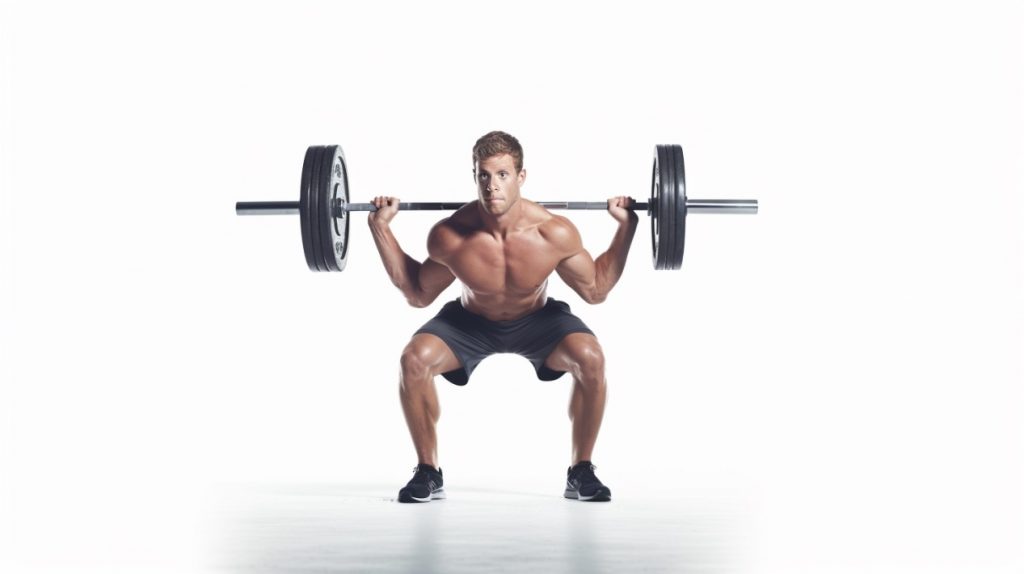Key Points:
- A low VO2 max and muscle weakness increase the risk of all-cause mortality more than factors like smoking and diabetes, according to Galpin.
- Galpin relays examples of protocols for improving VO2 max.
- Galpin recommends a specific protocol for building muscle strength.
In an episode of The Diary of A CEO, the renowned Dr. Andy Galpin told host Steven Bartlett,
“Physical strength is one of the strongest predictors of mortality of any metric in the entire world. The only [metric] that is sort of close to [strength] is your VO2 max. [These] things will out predict how long you’re going to live more than almost any other metric.”
Furthermore, VO2 max and leg strength more strongly predict early mortality than traditional mortality risk factors like blood pressure, smoking, and diabetes, said Dr. Galpin. For example, whereas smoking may trigger a 30% increase in risk for early mortality, a low VO2 max will increase mortality risk by 300%. It follows that VO2 max and strength are the top indicators of how long you will live, according to Galpin.
Fortunately, improving our VO2 max and muscle strength can increase the likelihood of living a longer life. In general, this requires high-intensity cardiovascular exercise and resistance training. The following are examples of specific protocols that can be utilized to improve VO2 max and strength, mentioned online by Galpin.
How To Improve Your VO2 Max

Galpin explains that VO2 max is your maximum ability to bring in and utilize oxygen, synonymous with cardiovascular fitness. Training VO2 max entails raising your heart rate to levels close to maximum. Your maximum heart rate can be estimated by subtracting your age from 220.
As a guest on the Andrew Huberman podcast, Galpin has said to shoot for about six minutes of VO2 max training per week. This can be split up across multiple rounds and multiple days with any type of exercise, including sprinting, biking, or swimming. In his conversation with Huberman, Galpin gives the example of the classic 30-second on, 30-second off protocol:
- 30 seconds of maximum effort exercise followed by
- 30 seconds of rest
- Repeated four times
- Done at least once, preferably twice a week
Another example would be the 20 seconds on, 40 seconds off protocol for six to eight rounds a few times a week. In the case of Huberman, he cycles at maximum effort for one minute each week but says he will now work on doing this twice a week. Overall, training vigorously, as close as possible to maximal effort, will help improve VO2 max. Low-intensity cardiovascular exercise for longer durations is also beneficial.
How To Improve Your Strength

In another conversation with Andrew Huberman, Galpin explained how to build muscle strength. Since then, Huberman has summarized this explanation. Huberman points out that most individuals perform resistance training exercises within a range of 5 to 15 repetitions. This repetition range helps build strength and muscle mass.
However, Galpin has explained that individuals who partake in resistance exercise regularly should spend about 10 to 12 weeks of the year training specifically for strength. To build strength, Galpin recommends the 3 x 5 protocol:
- Choose 3 to 5 compound exercises (e.g. squat, deadlift, bench press, row, shoulder press) per workout
- Perform 3 to 5 sets of each exercise
- Complete 3 to 5 repetitions per each set
- Allow for 3 to 5 minutes of rest between each set
- Repeat 3 to 5 days per week
The Downward Spiral

In his conversation with Bartlett, Galpin discusses what is called the line of independence (a VO2 max below 18 mL/kg/min for men and 16 mL/kg/min for women). Once our VO2 max crosses this line of independence, our body is unable to utilize enough oxygen to do everyday tasks. For example, getting dressed in the morning or getting up from the toilet may require 12 or 13 mL/mg/min of oxygen uptake, which would be close to 100%.
Furthermore, walking may require 15 mL/mg/min of oxygen uptake. Thus, Galpin says to imagine reaching your maximum heart rate just from walking up some stairs. He continues by saying that when our heart is no longer fit, it is under enormous stress just from surviving. What’s worse, our lack of oxygen utilization keeps us from doing things. We stop being around people and having purpose and drive. As a result, mental health may begin to spiral downward due to low self-worth and social isolation.
Additionally, Galpin says that leg strength will predict how long we will be physically active. Once our legs become weak, we stop being physically active because everything becomes difficult to do. For example, we may choose not to go for a walk because we may become exhausted and our legs will shake from weakness. In response, we may sit around and become more sedentary. Being sedentary leads to muscle atrophy, Galpin says, causing our muscles to become weaker. Eventually, like with a low VO2 max, this stops us from doing things, contributing to the downward spiral.